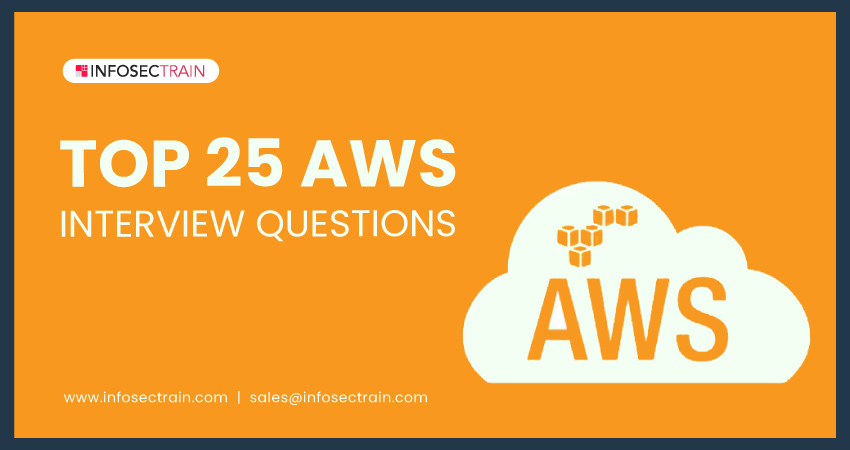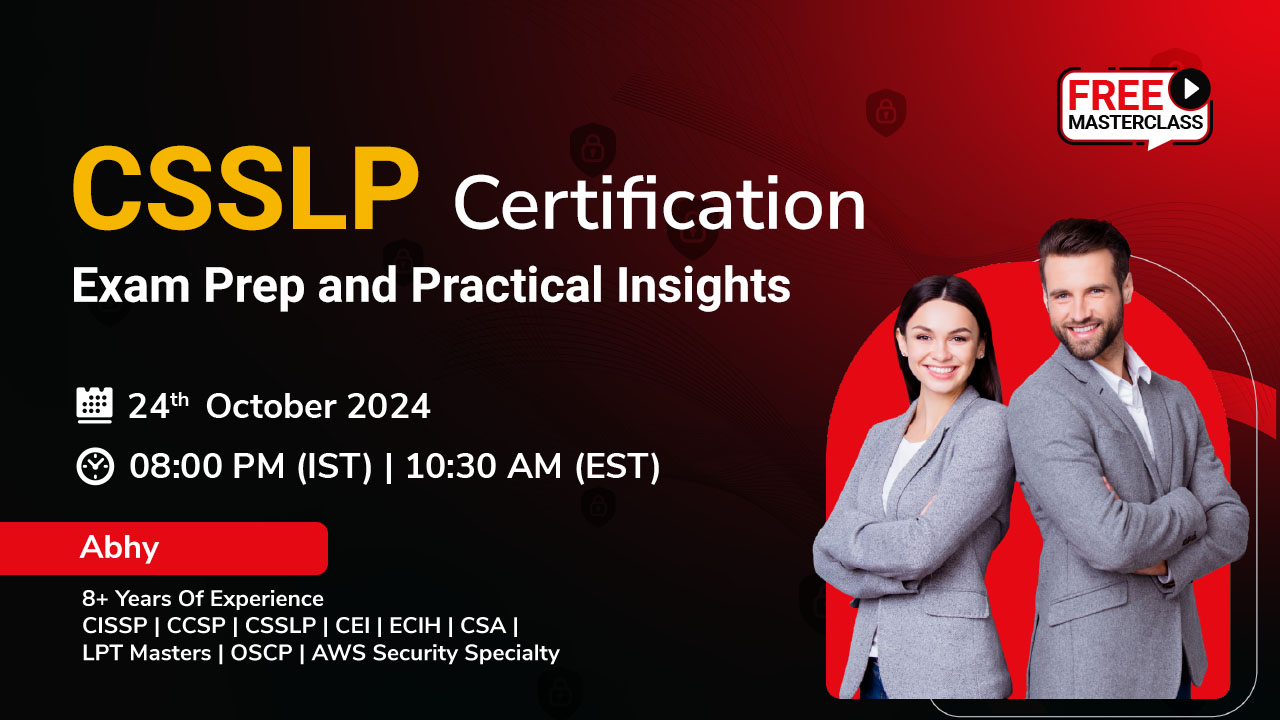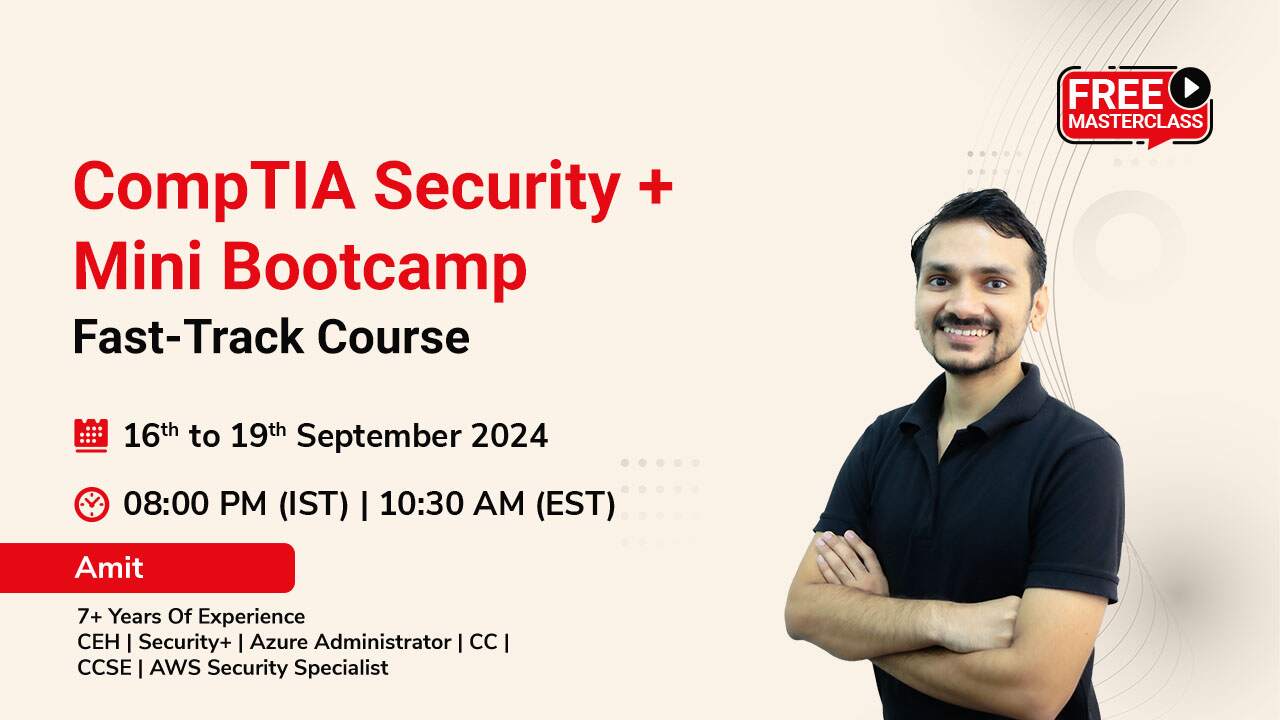Top 25 AWS Interview Questions
Amazon Web Services (AWS) is the leading cloud computing platform that offers flexible, scalable, and affordable solutions for organizations of all sizes to host and run their applications and services and store data. With AWS, you can access various services and tools, including storage, databases, computing, security, networking, analytics, machine learning, and more. AWS offers a wide range of career paths and opportunities for career growth and advancement. Professionals skilled in AWS can gain higher salaries and better job opportunities. Below are a few of the top AWS interview questions that will help you to succeed in your job interview to become a competent AWS professional.

Top AWS Interview Questions and Answers:
1.What are the components of auto-scaling?
The components of auto-scaling in AWS are:
- Launch configuration: Serves as a blueprint defining the EC2 instances that will be used in an Auto Scaling group.
- Auto-scaling group: Collection of EC2 instances launched and managed together.
- Scaling policies: Defines when and how the Auto Scaling group should scale the number of instances.
- CloudWatch alarms: Monitors specific metrics and triggers scaling policies when certain conditions are met.
- Elastic Load Balancer: Distributes incoming traffic across the instances in an Auto Scaling group.
- Termination policies: Determines the order in which instances are terminated during a scale-in event.
2. Describe Amazon EMR and its benefits.
Amazon EMR (Elastic MapReduce) is a managed big data processing service for Apache Hadoop and Apache Spark workloads on AWS. It allows users to process enormous amounts of data using a managed Hadoop framework without providing and addressing the underlying infrastructure.
Benefits of Amazon EMR:
- Scalable
- Easy-to-use
- Secure
- Cost-effective
- Integrates with other AWS services
3. What are the benefits of creating a group in IAM?
Creating a group in IAM allows you to manage multiple users under a single entity, streamlining user management and reducing administrative workload. If you add or delete users, you only need to change the group rather than manage permissions for each user.
4. What is Amazon Aurora?
Amazon Aurora is a cloud-based relational database service provided by AWS that is compatible with MySQL and PostgreSQL. It is highly scalable, resilient, and performant, providing database storage that automatically scales up or down as needed to meet demand.
5. What distinguishes Amazon ECS from AWS Lambda?
Differences between AWS Lambda and Amazon ECS:
| AWS Lambda | AWS ECS |
| It is serverless and automatically deploys code without the need for manual configuration. | It manages servers and requires manual configuration and scaling. |
| It runs in a stateless environment and can run for a limited time. | It runs in a Docker container and can run indefinitely. |
| It automatically scales in response to incoming requests. | It requires manual scaling. |
| It charges for the number of requests and execution time. | It charges for the underlying EC2 instances used to run containers. |
| It is well-suited for event-driven, short-lived applications such as image processing. | It is well-suited for long-running, stateful applications such as web services. |
6. What are Amazon EBS snapshots?
Amazon Elastic Block Store (EBS) snapshots are point-in-time copies of data used to back up and recover data in case of failure. It protects block storage such as EBS volumes, boot volumes, and on-premises block data.
7. What differentiates ALB, NLB, and GWLB from one another?
ALB, NLB, and GWLB are different types of load balancers offered by Amazon Web Services (AWS).
- Application Load Balancer (ALB): ALB efficiently distributes incoming application traffic across different targets, such as EC2 instances, containers, or IP addresses, to achieve high availability, scalability, and improved application performance.
- Network Load Balancer (NLB): NLB is a high-performance load balancer capable of managing millions of requests per second with ultra-low latencies. It focuses on distributing traffic based on IP protocols, ports, and target groups.
- Gateway Load Balancer (GWLB): GWLB acts as an entry point for inbound traffic into a VPC and provides the capability to deploy, scale, and manage third-party virtual appliances. It distributes the incoming traffic across multiple instances of the virtual appliance to ensure scalability and high availability.
8. What are the features of AWS Lambda?
Features of AWS Lambda include:
- Automatic scaling
- Event-driven computing
- Easy deployment and management
- High availability and fault tolerance
- Integrates with other AWS services
- Pay-per-use pricing
- Serverless computing
- Supports debugging and monitoring with CloudWatch
- Supports multiple languages
9. What are the differences between a Root AWS user and an IAM user?
Differences between a Root AWS user and an IAM user:
| Root AWS user | IAM user |
| Root AWS user has full access to all AWS resources and can perform any action. | IAM user has only the permissions that are explicitly granted to them. |
| Root AWS user is managed directly. | IAM user is managed within the IAM service. |
| Root AWS user is associated with the AWS account and is responsible for all charges incurred by the account. | IAM user can be granted permission to only specific AWS resources, which help to limit the costs incurred by the account. |
10. What are the advantages of AWS Aurora?
AWS Aurora has the following advantages:
- High performance and scalability
- Automated backups
- Multi-region replication for disaster recovery
- Compatibility with MySQL and PostgreSQL
- Serverless option for cost optimization
- Continuous patching and database maintenance
11. What are the components of Elastic Transcoder?
The components of Amazon Elastic Transcoder are:
- Input Files: It is media files that need to be transcoded and stored in Amazon S3.
- Output Files: It is transcoded media files stored in Amazon S3.
- Pipelines: It represents a workflow for transcoding media files.
- Jobs: It represents a transcoding task consisting of one or more input files, output files, and transcoding settings.
- Presets: It is preconfigured settings for transcoding media files to ensure consistent quality and output format.
- Playlists: It is a collection of preconfigured transcoding settings for different types of media and devices.
- Notifications: It keeps you updated with the status of your job and progress updates.
12. What are the minimum and maximum storage sizes that S3 allows?
The minimum and maximum sizes of objects stored in S3 are 0 bytes and 5 TB per object respectively.
13. Define Amazon EventBridge.
Amazon EventBridge is a fully managed or serverless event bus service provided by AWS. It enables various applications and services to integrate by allowing event-driven architectures, simplifying event routing, filtering, and processing, and supporting real-time event-driven workflows and automation.
14. What are the use cases of an Amazon RDS?
Some possible use cases of Amazon RDS include:
- Simplified database administration and maintenance.
- Scalability and automatic backups.
- Hosting relational databases in the cloud without managing the underlying infrastructure.
- Support various database engines such as MySQL, PostgreSQL, Oracle, MariaDB, and SQL Server.
15. Define security group.
A security group is the first defense against hackers. It controls incoming and outgoing traffic to the EC2 instances as a virtual firewall.
16. What is redis?
Redis stands for Remote Dictionary Server type of Elasticache. It is an in-memory data structure store used as a database and cache to support various data structures such as strings, sets, lists, hashes, and sorted sets. It provides high availability, replication, and automatic partitioning with Redis Cluster.
17. What are the differences between snapshots and AMIs?
Differences between snapshots and AMIs:
| Snapshots | AMI |
| They are point-in-time copies of data from Amazon Elastic Block Store (EBS) volumes. | They are a complete image package that includes an operating system, applications, libraries, and associated configuration settings. |
| They are used for backing up and restoring individual volumes. | They are used for creating instances (virtual servers) with pre-configured software and settings. |
| They are stored in Amazon Simple Storage Service (S3). | They are stored in Amazon Elastic Compute Cloud (EC2). |
18. What are some examples of terminologies used in AWS EC2?
Terminologies used in AWS EC2 include:
- Instances
- Security groups
- Key pairs
- Virtual Private Cloud (VPC)
- Region and availability zones
- Amazon Machine Image (AMI)
19. What security features are offered in Amazon Virtual Private Cloud (VPC)?
Security features in Amazon VPC include:
- Flow logs
- Security groups
- VPC endpoints
- AWS PrivateLink
- Internet gateways
- AWS shield for DDoS protection
- Elastic Network Interfaces (ENIs)
- Internet Protocol security (IPsec)
- Network Access Control Lists (ACLs)
- AWS Web Application Firewall (WAF)
- Virtual Private Network (VPN) connections
- AWS Certificate Manager for SSL/TLS certificates
20. What is AWS Glue?
AWS Glue is a fully managed, serverless, and cloud-optimized extract, transform, and load service offered by AWS for processing large amounts of data. It provides a quick and effective method to move data between data stores for analysis and makes it accessible for search and reporting.
21. What is CloudWatch?
Amazon CloudWatch is a service that monitors the AWS resources and the applications running on the AWS cloud. It provides data and operational insights for various resources such as EC2 instances, RDS databases, and S3 buckets. It allows users to set up alarms, view and analyze logs, and track metrics over time to help identify trends and improve operational performance.
22. What types of databases are there in RDS?
Following is a list of RDS’s database types:
- Microsoft SQL Server
- MySQL Server
- Oracle
- Aurora
- PostgreSQL
- MariaDB
23. What is AWS API Gateway?
Amazon API Gateway is an AWS fully managed service for building, deploying, and managing APIs for application backends. It allows developers to create, publish, and manage APIs for web and mobile applications and handle all the tasks involved in processing API requests, from traffic management to authorization and access control.
24. Describe Amazon Snowball Edge.
Amazon Snowball Edge is a data transfer device and solution offered by AWS for the secure, fast, and offline transfer of massive data into and out of the AWS cloud. It consists of a portable, ruggedized storage device that can be shipped to a user’s location, where data can be transferred onto the device and then sent back to AWS for processing.
25. Describe AWS Command Line Interface ( AWS CLI).
AWS Command Line Interface (AWS CLI) is a unified tool for managing AWS services from the command line, allowing administrators to control AWS services from the terminal and automate tasks using scripts.
AWS-Related Interview Questions
- Top 25 AWS Interview Questions-Part 1
- Top interview questions for AWS Solutions Architect
- Top AWS Architect Interview Questions In 2022
How can InfosecTrain help you?
We hope these AWS interview questions and answers will help you ace your next AWS interview. We at InfosecTrain are ready to help you on your journey to becoming an AWS expert. InfosecTrain offers various certification and customized training courses to become AWS experts, such as AWS Certified Solutions Architect-Associate, AWS Certified Solutions Architect-Professional, AWS Certified Cloud Practitioner, AWS Certified Security Specialty, and AWS Certified SysOps Administrator Associate. Earning these AWS certifications with our highly knowledgeable and experienced instructors can advance your careers in cloud computing technology and demonstrate your expertise and knowledge in cloud computing and AWS to customers.







 1800-843-7890 (India)
1800-843-7890 (India) 
